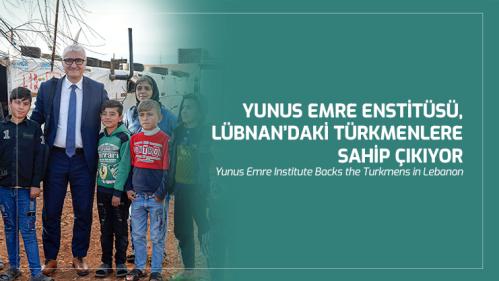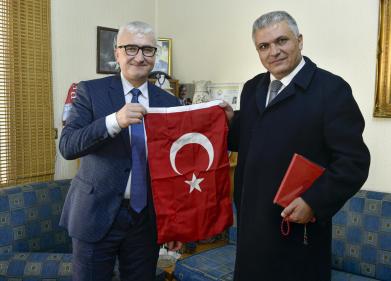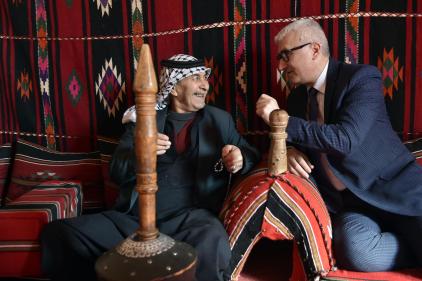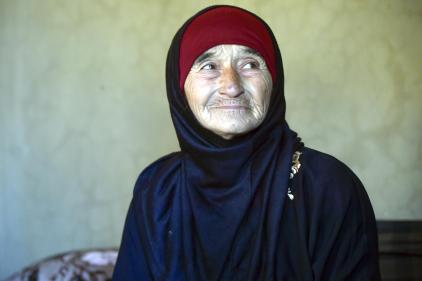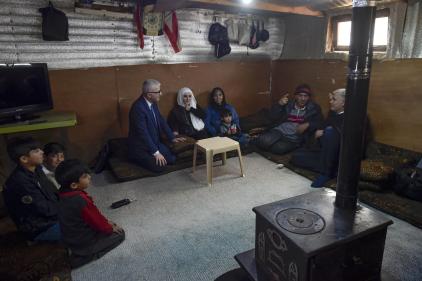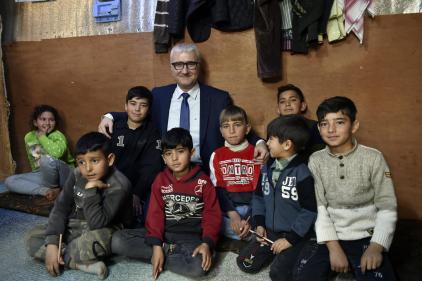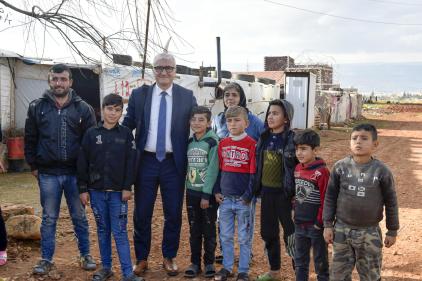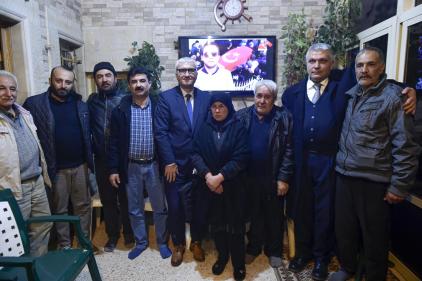Yunus Emre Institute Backs the Turkmens in Lebanon
Yunus Emre Institute started field visits in order to support the Turkish presence in Lebanon and to determine the activities that can be carried out in the region where Lebanese Turkmens live.
Visiting the regions where Lebanese Turkmens live, Yunus Emre Institute Head of Education Department Prof. Yavuz Kartallıoğlu stated that the dialects spoken by these people are very valuable for Turkish language and history.
TURKMEN CHILDREN FACE THE THREAT OF FORGETTING TURKISH
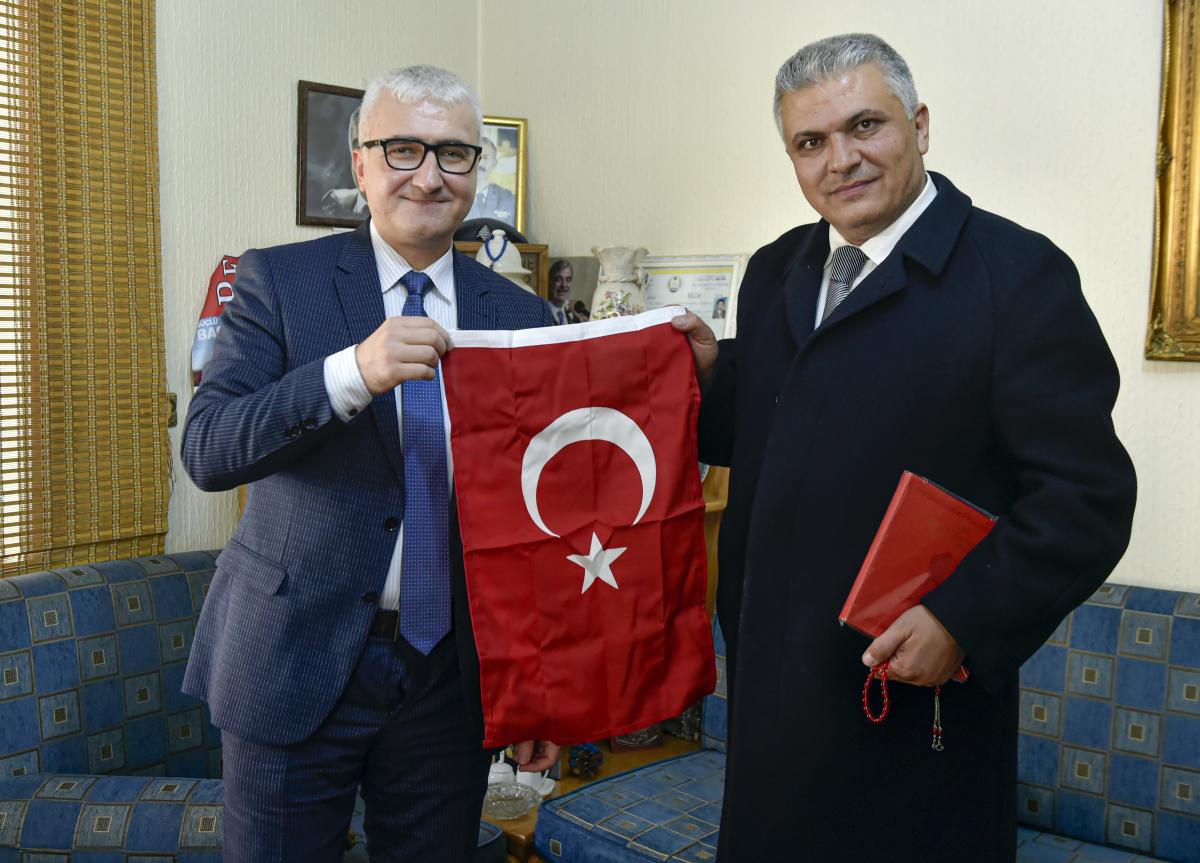 Turkmens, who have made Lebanon their home for centuries, do not want to lose their language and the rich verbal cultural heritage passed down from generation to generation. Today, however, Turkmen children face the danger of forgetting Turkish due to the education they receive in schools and increased interaction with other cultures.
Turkmens, who have made Lebanon their home for centuries, do not want to lose their language and the rich verbal cultural heritage passed down from generation to generation. Today, however, Turkmen children face the danger of forgetting Turkish due to the education they receive in schools and increased interaction with other cultures.
Prof. Kartallıoğlu visited the Turkmen villages in the Beqaa Valley and north of Tripoli and observed the cultural and scientific studies that can be carried out to ensure the preservation of Turkish in Lebanon.
Kartallıoğlu, accompanied by Turkmen Councilman Ali Gorli from Duris Municipality in Beqaa, visited the villages of Duris, Şeymiye, Hadidiye, Addus and Nanaiyye, and visited the houses in Kavaşra (Göçerli in Turkish) and Aydamon in the province of Akkar in the northern part of the country, and handed out various gifts and Turkish storybooks.
TURKISH STORIES READ TO TURKMEN CHILDREN
Taking souvenir photographs with the Turkmen children he met on the streets and having conversations with them in Turkish, Kartallıoğlu experienced emotional moments when he saw their great interest in Turkey and Turks.
"WE NEED TO INCREASE THE NUMBER OF TURKISH TEACHERS"
Kartallıoğlu also had the opportunity to listen to old folk tales called "horafa" in the Turkmen houses he visited and noted that Yunus Emre Institute should increase the number of Turkish teachers in Turkmen villages.
Stating that he was pleased to see many works built by Turkey in Turkmen villages in Lebanon, Kartallıoğlu noted:
“These regions show an interest in the Republic of Turkey for 20 years. We provide help however we can. As Yunus Emre Institute, we are doing some work here to ensure that Turkmens preserve their language, literature and culture. We need to systematize education by increasing the number of Turkish teachers in this region."
"THEY WOULD NOT LET US LEAVE WITHOUT HAVING COFFEE, TEA AND SOME FOOD"
Pointing out that they could easily get along with the middle-aged people here in Turkish, Kartallıoğlu said: "They call the language they speak Obaça or Obaçı. Since the day we arrived, they have hosted us by saying 'the village is your village, the town is your town, the house is your house'. They would not let us leave without having coffee, tea and some food.”
Mentioning that there are many Turkmen young people who have studied at universities in Turkey with Turkish Scholarships, Kartallıoğlu emphasized that Yunus Emre Institute can support them to continue their university and graduate education in Turkey.
"WE ARE READY TO WORK FOR THE CONTINUED PRESENCE OF TURKMENS IN LEBANON"
Turkologist Kartallıoğlu, who also evaluated the history of Turkmens, who have existed in this region for nearly a thousand years, concluded his words as follows:
"They are probably composed of the original Oghuz population and the Oghuzes who traveled west from the vicinity of Turkestan. Some say that we came here in 1515, during the reign of Sultan Selim the Resolute. Others explain their history as 'we were what we were, we do not know'. In fact, we hear here the same language forms that we hear in many places in Anatolia.
The Turkmen presence in the Lebanese region has persisted for < thousand years. We must protect the Lebanese Turkmens who have preserved Turkish for centuries. As Yunus Emre Institute, we are ready to work together with other state institutions to ensure the continuation of this presence here with their language, literature and culture."
Kartallıoğlu visited the July 15 Martyrs Monument in Kavaşra village and signed the commemorative book at the Karabakh Martyrs Monument in the same village.

